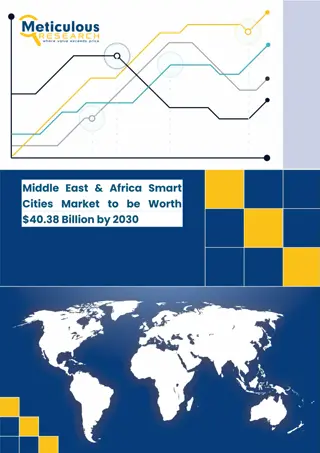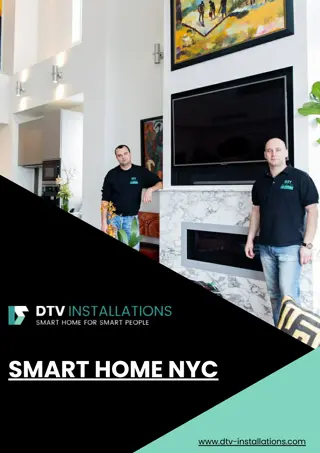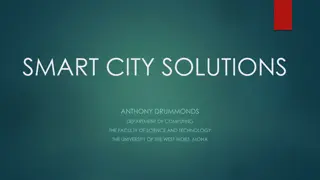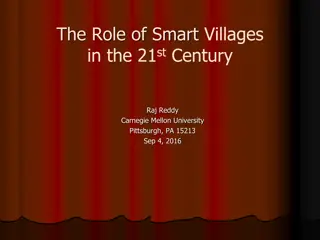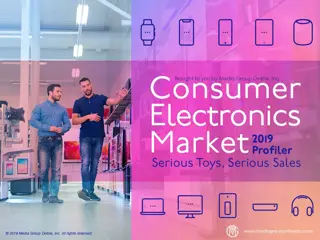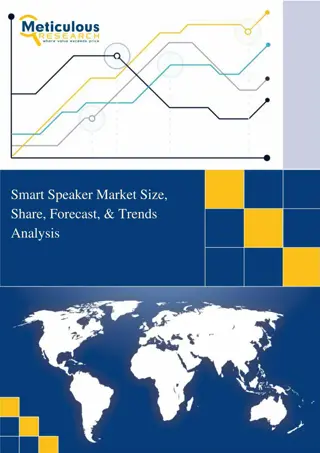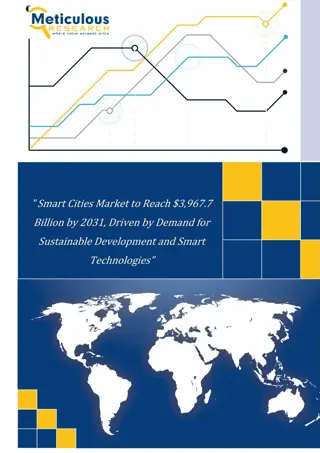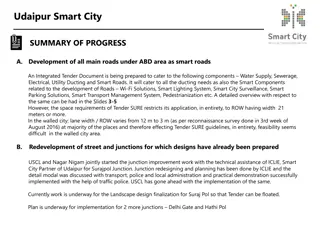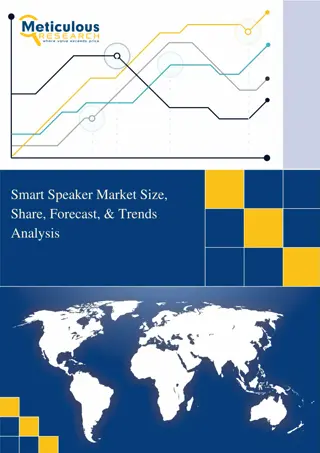The Smart Life: Embracing Emerging Technologies
The Smart Life era is here, ushering in a wave of emerging technologies like AI, robotics, and 5G. Discover how consumers, parents, and tech elites view these innovations and their potential impact on daily life.
Download Presentation

Please find below an Image/Link to download the presentation.
The content on the website is provided AS IS for your information and personal use only. It may not be sold, licensed, or shared on other websites without obtaining consent from the author.If you encounter any issues during the download, it is possible that the publisher has removed the file from their server.
You are allowed to download the files provided on this website for personal or commercial use, subject to the condition that they are used lawfully. All files are the property of their respective owners.
The content on the website is provided AS IS for your information and personal use only. It may not be sold, licensed, or shared on other websites without obtaining consent from the author.
E N D
Presentation Transcript
Another Big Leap Forward For much of the 20thcentury and into the 21stcentury, we were told the world, our lives would be transformed on an epic scale. Of course, it has and the next big leap is upon us: The Smart Life. We almost unconsciously accept and even welcome new technologies and ideas into our lives. Computers, smartphones and the Internet are integral to our everyday lives. Now, newer technologies artificial intelligence, robotics, advanced automation, 5G, etc. are quickly moving from the tech world into the everyday world. All of us have every reason to be excited about living the Smart Life.
Smart Humans According to a May 2018 survey from Intel of both consumers and tech elites, 40% of respondents said emerging technologies will bring tremendous improvements to communities around the world and individual s day-to-day lives. To be fair (and a clear example of many people s skepticism and even resistance to change) is the 40% who also said emerging technologies will bring improvements to communities and individuals, but will also cause just as many new problems. Not surprisingly, Millennials were the most excited about emerging technologies, at 60%, and more surprisingly, parents with children, at 53%.
Excitement Levels About Familiar vs. Emerging Technologies When asked about which technologies excite them the most, consumers were significantly more excited about familiar than emerging technologies, which should be expected. Consumers were most excited about the familiar technologies of computers, at 44%, and smartphones, at 47%, but less so about smart home technologies, 27%; 5G, 30%; and wearables, 22%. Emerging technologies generated a mix of excitement levels, with augmented and/or virtual reality at 23%, but almost an equal percentage, or 18%, weren t very excited.
Smart Parents Most parents want the best for the children throughout their lives, which is very likely why 48% of parents participating in the May 2018 Intel survey said emerging technologies will bring tremendous improvements. Another 37% were a bit more cautious, stating emerging technologies will improve the quality of living in communities and for individuals, but will also result in new problems. Parents are much more excited about today s technologies than adults without children, for example, smartphones, 91% and 76%, respectively; computers, 87% and 79%, respectively; and 5G, 68% and 57%, respectively.
Parents Have a Favorable View of Artificial Intelligence Interestingly, when asked about the potential benefits of artificial intelligence (AI), parents were more excited than non-parents, at 45% and 34%, respectively, and fathers more than mothers, or 64% and 28%. Of those surveyed, 51% of parents agreed AI would be beneficial to automating everyday tasks, compared to 38% of non-parents. Plus, fathers agreed more than mothers, at 63% and 41%, respectively. Parents are also already more likely to own AI technologies than non-parents, such as mobile phone voice assistants, 52% and 41%, respectively, and voice- assisted remote controls, 25% and 13%, respectively.
The Smart Home Many people s introduction to smart home technologies began with smart thermostats and whole-house security systems and now voice-activated assistance devices, such as Amazon Echo and Google Home. Smart speakers were initially a novelty to many, but are now being integrated into everyday lives. According to a February 2018 survey, 35% of their owners had ordered groceries or toiletries on their devices. Another significant forecast from Adobe during September 2018 was almost 50% of consumers will own a voice-activated smart speaker by the end of the 2018 holiday season.
Smart Home Devices Current Adopters and Intenders GutCheck s June 2018 Smart Home Device Adoption study of 5 category profiles found most consumers who had adopted these devices or planned to purchase them during the next year were women, living in the suburbs and owned their home. In the home management category, women are #1 among both genders and all age groups, at 59%; however, men were slightly ahead of women in the utility management category, 51% and 49%, respectively. Among those who live in an urban setting, smart home devices for appliances was first, at 37%, while the entertainment category was first among renters, at 39%, with home management second at 36%.
The Smart City The transformation of today s cities into Smart Cities will obviously take more time than purchasing a voice- assisted speaker for use in the home, but the momentum is building to apply existing and advanced technologies to the effort. Sidewalk Labs, a subsidiary of Alphabet, Google s parent company, announced during October 2017 a $50-million initial phase for its vision to reimagine the city concept with Quayside, a new neighborhood in Toronto. Local businesses and public facilities operators in Columbus, OH are now able to communicate with users via Bluetooth-connected mesh networks with the Columbus 2GO mobile app, which is just one of the technologies in its Smart Cities project.
Smart Retail Smart Retail technologies are advancing at a rapid pace. During June 2018, McDonald s announced it would install self-ordering kiosks and add mobile-order technology to 1,000 US locations every quarter for the next 8 to 9 quarters. Many chains, including Kroger, have been testing smart shelves, which are capable of interacting with shoppers mobile phones to communicate immediate special offers. The first AmazonGo store, which was opened to the public during January 2018, was considered a novelty by many, but late-September 2018 news stories reported Amazon is considering the opening of as many as 3,000 of the stores by 2021.
5G Is the 5thGear of the Smart Life A myriad of current and future industries will benefit greatly from 5G technology, including autonomous vehicles, which will allow them to react faster than humans to the driving environment. 5G will greatly enhance the operation of industrial facilities, as chips implanted in machines and vehicles will provide instant feedback about performance as well as indicating when a part is likely to fail before it does. Consumers may be less likely to delete brand and retailer apps that currently operate too slow (too much network latency), because they will work much faster with 5G, in many cases, 100 times faster than 4G.
Smart Broadcasting The big news for local TV stations has been the development and introduction of the ATSC 3.0 broadcast standard, but there are many other advancements, changes and disruptions that will contribute to the Age of Smart Broadcasting. Artificial intelligence will likely impact the TV industry in many ways. One of which is AI-based analytical platforms capable of measuring the popularity of specific characters and themes in programming content. During August 2018, Nielsen announced the availability of its Local Nielsen Media Impact media-buying data service, which had previously only been available nationally.






